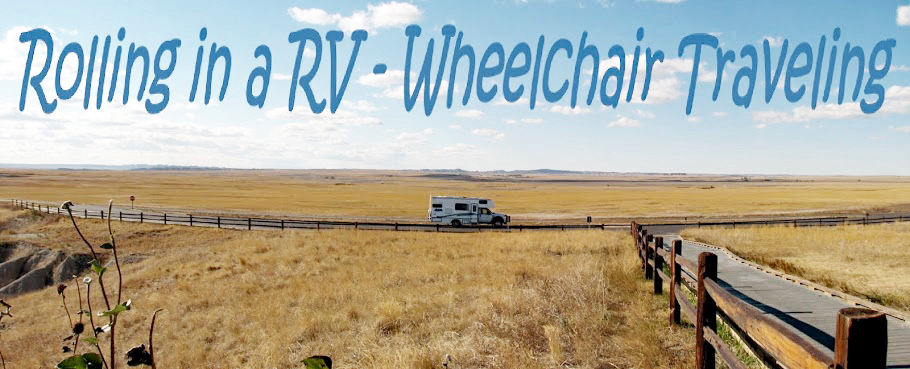The park is a bit rundown. The tennis courts look like they get little use and the pool is closed but the grass is kept trimmed and the baseball fields and the long picnic shelter are all in good condition. All in all a good, quiet place to stay for a night. Park 33.43793, -101.65052
Thursday, January 1, 2026
Slaton Park Campground City Park
Saturday, December 27, 2025
Earl G Williamson Park
The photo below is of the picnic area. I didn't get a photo of the waterfront RVs sites but they are next to the picnic area and lined up side by side so the view is from the front or back windows depending on whether you pull in or back in.
None of the sites are designated as accessible but they have wide, paved parking pads so they are usable. The picnic tables do not have extended tops or paved access and they are on concrete slabs so they may not be accessible. Campground 32.72847, -93.97285
Thursday, December 25, 2025
Louisiana State Exhibit Museum
The museum is one of the PWA buildings. It has an unusual circular design with a courtyard and fountain in the center and exhibits in cases on both sides of an outer ring. Twenty wonderfully detailed panoramas of rural life in Louisiana in the 1930s and 40s were made by artists employed under another PWA program, the Federal Art Project. The figure are made of beeswax with bendable wire frames. The building and these panoramas make the museum a must see spot.







Sunday, December 21, 2025
Margaritaville Resort Casino
The casino is accessible.
There aren't any signs for oversize vehicle parking so we parked in the fairly empty area of the lot with several trucks and another RV. We stayed two night and were not visited by security. Casino 32.52246, -93.74335
Friday, December 19, 2025
Birmingham Civil Rights Institute
We parked in an accessible space in the lot located at the rear of the museum. The lot is wide so we could pull straight in without blocking anything. Large RVs can be parked across the spaces or on the street. Institute 33.51585, -86.81546
Tuesday, December 16, 2025
Bass Pro Birmingham, Alabama
Sunday, December 14, 2025
Berman Museum of World History



The museum is accessible.
RVs will fit in the lot on the opposite side of museum drive. Museum 33.69704, -85.8191









































